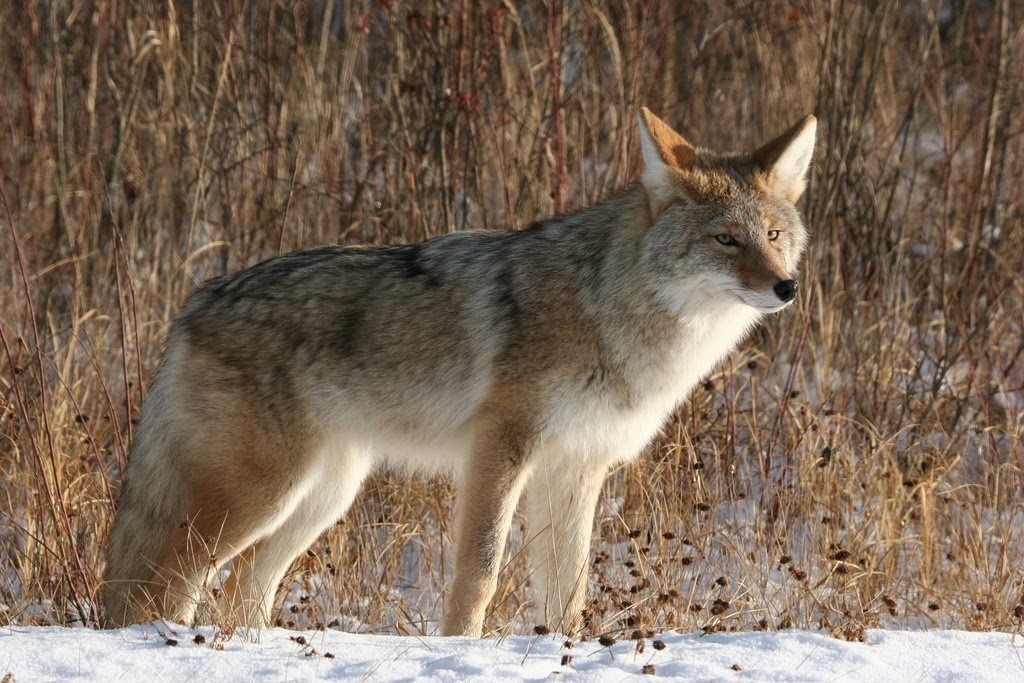Recent Coyote Sightings in Southfield: What You Need to Know!
February 20, 2020
Recent well-publicized coyote sightings in urban and suburban areas have raised many questions about these wild neighbors. Though more common in wooded areas, they are highly adaptable to living close to humans and are attracted to easy food sources such as pet food, unsecured trash and high rodent populations. Although people are often frightened when they see a coyote wander into their area, there is generally little cause for alarm.
Please Note: There have been no known attacks on humans by coyotes in Michigan!
However, if you know of coyotes in the area, it is advisable to closely monitor small pets while they are outside, and it is especially important to keep cats indoors, as Michigan Humane Society recommends at all times. To prevent problems with any wild animals, do not attempt to approach or handle them!
COYOTES IN OUR COMMUNITY
Coyotes have been residents in southeastern Michigan, including the City of Southfield, for many years. In recent years the population has grown and sightings of coyotes have increased. Milder winters, plentiful food sources, lack of predators and less disease allow for the animals to increase in number. Due to the development of natural areas, the frequency of human-coyote interaction has increased. Contrary to popular belief, coyotes are not necessarily being displaced due to development and in many instances, it is the development itself that attracts the animal. The ravines, drainage system, nature and park areas, and cemeteries in our community give coyotes the ability to roam for several miles and provide natural cover for dens.
The breeding season for coyotes begins in late December and that, along with the loss of cover with the dropping of the leaves, results in increased sightings. As spring approaches, pups begin dispersing from the den site to establish home ranges of their own. Coyotes are active day and night; however, peaks in activity occur at sunrise and sunset. Southfield Animal Control often receives calls about coyotes from someone who has just seen a coyote for the first time in their neighborhood and is fearful that the coyote is going to harm their pets. Rarely is there reason for alarm, but people need to be respectful of coyotes and follow the same precautions as with any other wild animal.
Is it a coyote you are seeing? The coyote resembles a German Sheppard dog but is lighter in color, has yellow slanting eyes, longer legs and a more prominent point to the nose and ears. Most coyotes are gray to blonde, but some show a rust or brown coloration and have a bushy tail that is tipped with black. The coyote will vocalize with high-pitched wails: sharp howls and “screams” which go up and down the scale very rapidly. They have been reported as “sounds like something being killed.” Coyotes can be spotted traveling alone or in pairs, and on rare occasions a large group may be seen.
Coyotes are opportunistic and will eat almost anything available. Small mammals such as mice, voles, rabbits and squirrels are preferred foods. However, insects, fruits, berries, birds, frogs, snakes, plants and seeds round out their diet. In urban areas coyotes are attracted to garbage, garden vegetables and pet foods. They will also prey on unattended small dogs and cats.
Coyotes have an instinctive fear of humans but when people feed them, they can lose that fear and present a human safety risk. The following points can help minimize potential conflicts with coyotes:
- Do not leave small or defenseless children unattended outdoors.
- Do not allow pets to room free and do not let cats and small dogs out at night without being accompanied by a person.
- Never approach or attempt to touch a coyote.
- Never intentionally feed a coyote and be mindful that bird feeders may attract coyotes.
- Eliminate all outside food sources, especially pet foods and do not leave table scraps or leftovers outside for the wildlife.
- Make trash cans inaccessible.
- Clear out wood and brush piles. They are good habitat for rats and mice, which may attract coyotes.
- Spay or neuter dogs. Coyotes are attracted to and can mate with unspayed or unneutered domestic dogs.
If you have any questions regarding coyotes or any other wildlife, contact Animal Control at (248) 796-5425.
